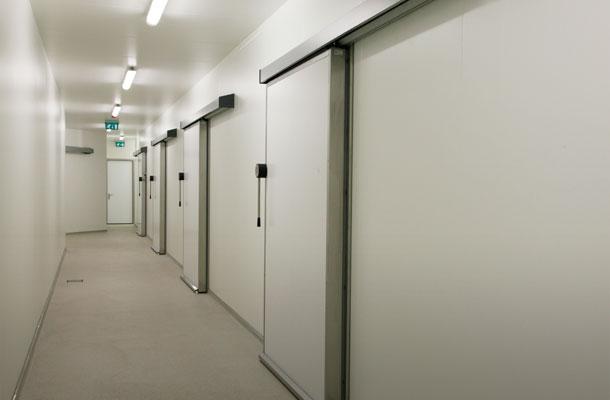Reducing the hatchery’s energy costs for effective management
Tags: Climate control | Whitepaper
, 22 September 2014

In multi stage incubation, heat is transferred from old eggs to the younger eggs, which demands less additional heating and cooling capacity by the incubator. This may seem like a good way to save energy, but in fact, the incubator is having to run full fan speeds 24/7 365 days a year, to deliver a constant airflow even when machines are not fully loaded.
Conversely, when employing single stage incubation, savings are realised by exchanging energy at hatchery level instead of inside the incubator. After a few days’ incubation, the embryos collectively produce increasing levels of metabolic heat and require cooling to maintain optimal embryonic temperature. A chiller for cooling water produces heat, which is dissipated by fans and lost to the outside environment. Using a heat pump instead of a chiller enables the heat produced to be recycled for pre-heating incoming air, or heating water in a buffer tank for washing and cleaning. As 1m³ of water contains 3,500 times more energy than 1m³ of air per degree Kelvin, it is more efficient to regain energy from water – and therefore less cost-effective to invest in a cross-flow heat exchanger that takes heat out of used air from the setters.
With single stage incubation, incubator motors only run when the machine is loaded. While maximum airflow is required to transfer heat to and away from the eggs at the beginning and end of the incubation cycle, energy can be saved by installing frequency drivers on the motors, because fan speed can safely be reduced during the days in between.
The single stage incubator uses pre-conditioned air for ventilation, which can require considerable energy depending on external climate conditions. With an automatically controlled air valve or damper based on CO₂ and RH levels inside the incubator, the amount of fresh air intake required is optimized to provide only what is needed.
Using pressure controllers for the various rooms in the hatchery also minimizes the amount of air needed, providing the doors to adjacent rooms are always closed – or ideally, automatic doors are installed.
For example:
Heating 20,000m³/h from -24°C up to 24°C costs 378kW.
Heating 17,500m³/h from -24°C up to 19°C costs 296kW.
Result: 22% saving on heating power.
Further energy savings can be achieved by using multiple set points in the Air Handling Units rather than fixed set points year round. For example, instead of maintaining a constant 24°C in the setter room throughout the year, allowing temperature variance between 23°C in the morning up to 27°C at the peak of the day during the summer, and maintaining temperatures at the lower end of specifications during the winter, will have beneficial effects.
Geographical location combined with climate conditions will have a major influence on the building and the amount of energy needed. With the wrong construction materials and/or insulation, it can be expensive to maintain the correct conditions inside the hatchery
Ultimately, energy saving begins with a greater awareness of the energy we are using. With care and innovation in the process solutions we choose, we can deliver substantial energy savings – and greatly reduced energy bills!
Advice
In the Incubator:
- Install frequency controllers on the fan motors to reduce fan speed when possible.
- Install CO₂/Humidity controlled valve regulation to limit ventilation to what is needed.
In the hatchery:
- Use pressure sensors for room ventilation.
- Keep doors closed to minimize loss of ‘expensive’ air.
- Calculate whether investing in a heat pump is more cost-effective than using a chiller.
- Use multiple temperature set points within specification during the year.
- Check the efficiency of hatchery insulation.
Written by Sander Koster
Process Improvement Manager
I welcome your feedback on this article - and if you require any additional information, please don't hesitate to contact me.